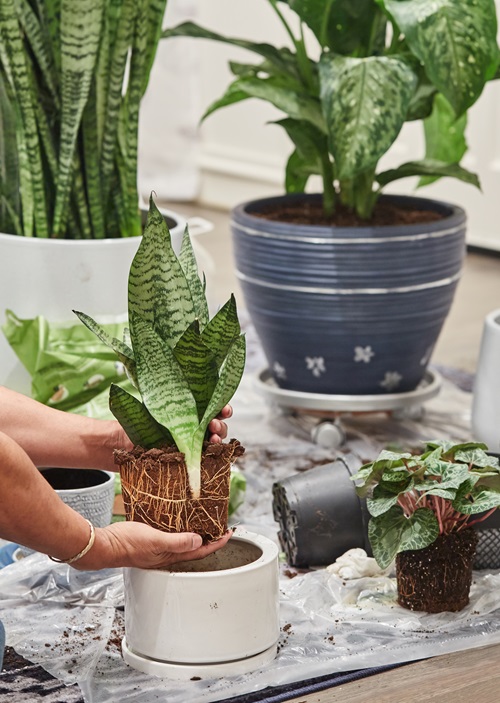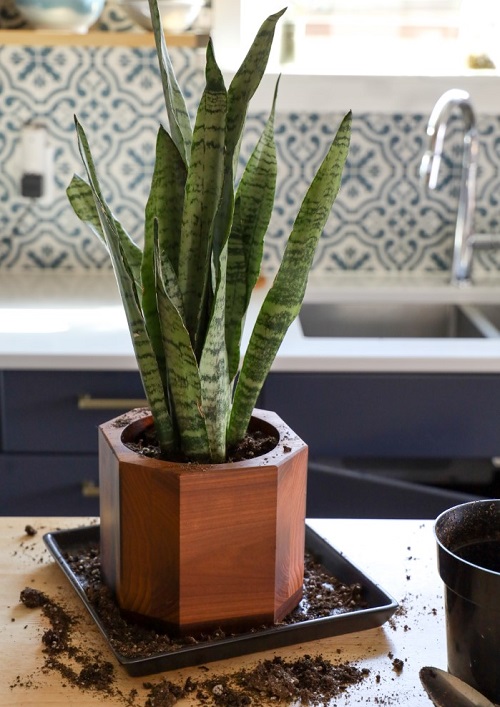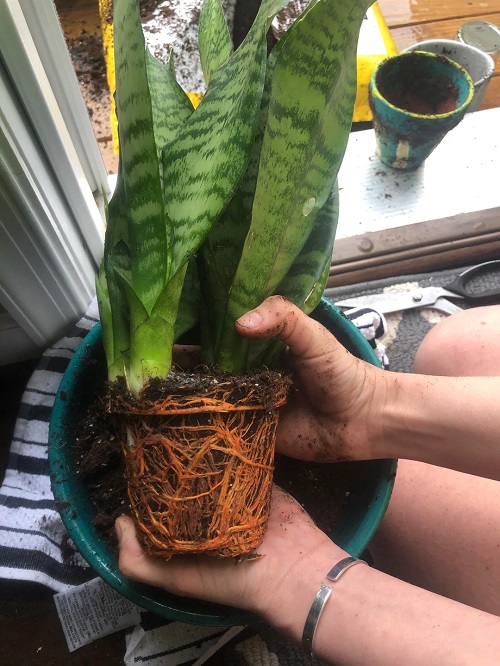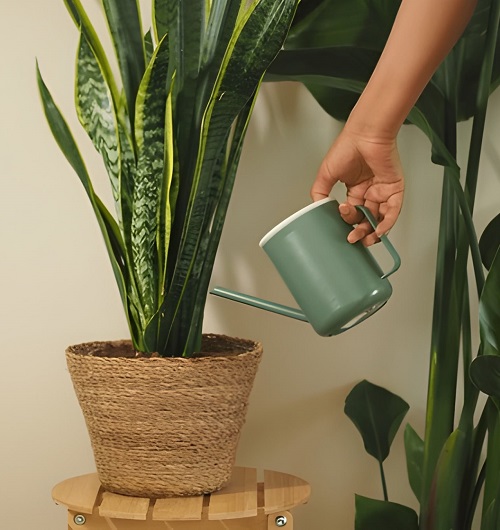It is time to repot your snake plant, but like a pro this time. Master the techniques and see how it thrives in the times to come.
Everything looks perfect with care and time. But how long has it been since you repotted your snake plant? Wait! Don’t do it on any given day. Read ahead to find the right time to increase the number of pups and flowers instead of reducing them, and unlock the benefit of giving it fresh soil and more air.
Why is There a Need to Repot?

Snake plants or Dracaena (formerly Sansevieria) might choose to finish last and prove that slow and steady wins the race. But when they mature, their thick rhizomes spread quickly beneath the soil. If you keep them in the same pot for too long, these rhizomes can crack the container or suffocate the roots, giving stunted growth.
This is when repotting can save your Mother-In-Law’s Tongue. It gives more space to grow and lets you refresh the growing medium, because the old soil may have lost all its nutrients and become compacted, which might lead to drainage issues.
Again, timing is crucial. They love a root-bound state. To promote healthy growth and flowering, avoid frequent repotting and use a pot only slightly larger than the root ball. When repotting, grip the leaves near the base to prevent damage. Damaged leaves may not fully recover, so handle them with care.
When Should we Repot?

Repotting is essential, but it should be done carefully. Repot when you find that growth has slowed down, when the roots circle or play peek-a-boo from drainage holes, when the pups crowd the mother plant, or when the pot is damaged. If the soil is compacted, the pot feels heavy, and has stagnant water on the surface, it is your cue to repot.
With more exposure to sunlight, a snake plant grows new leaves and can reach 3 to 6 feet in height every year. Gently separate the roots with your fingers; if you find that they are tightly tangled after you take the plant out, it’s best to loosen them to encourage healthy growth in the fresh soil.
Choose the growing season of spring and mid-summer to repot, when the plant is in its active growing phase. Avoid late fall or winter unless you live in a hot climate, because the plant enters dormancy and might struggle to adjust.
Let’s Begin our Repotting Journey

Snake plants need a little extra care because of their heavy leaves and sensitive roots. Start by watering a day before — moist soil makes it easier to slide the plant out without breaking roots.
Gently tilt and tap the pot to loosen the root ball. Trim soft or mushy roots using sterilized scissors. If the soil smells bad or feels soggy, replace it to prevent rot. And if your plant’s in a plastic pot, switch to clay or ceramic for better airflow.
Choose a pot that’s one size (about 2 inches) larger with good drainage. You can even reuse the same pot if you separate and transplant pups elsewhere. Avoid oversized pots — they hold too much moisture and can cause rot.
Add a well-draining, gritty mix at the bottom. Place the plant upright at the same depth as before and tap the sides to remove air pockets. For tall plants, top the soil with small pebbles to prevent tipping — these beauties prefer cozy, stable spots.
Post our Repot Journey

Repotting might make the snake plant a little stressed, and that is normal. Do not water for the first week and keep it out of direct sunlight or intense indirect daylight. Once you see new growth or the plant looks settled, you can follow your regular watering schedule and light fertilization.
Use a diluted liquid fertilizer (at 1/4 strength) after 4–6 weeks to boost recovery and encourage strong, upright leaves. Keep on rotating the pot every few weeks to let all the sides of the plant get equal light. This will help them to grow evenly without having leggy growth.
Don’t forget to take care of them like usual once they have de-stressed and adjusted well in their new abode.
Repotting is like making sure your plants have a new and nutritious base to grow and thrive again. Why would you not want to experience this magic again? Let us know how you find repotting your snake plants in the comments below.






